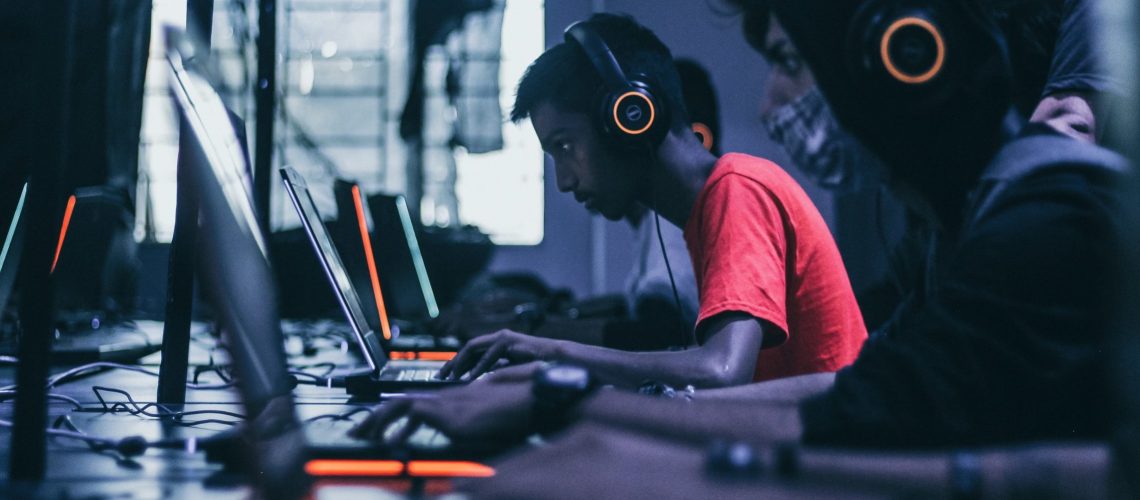In esports, tactical constructs and coordinative movements, such as using the hand to control the mouse or fingers to interact with the keyboard or gamepad, need to be practiced. Especially important is the ability to combine, coordinate and adjust individual movements of fingers and hands. Situations change quickly and often unexpectedly; therefore, a flexible and fast adaptation of movements to new situations is required. Of course, the complexity and importance of certain movements vary from esport to esport.
There are different approaches to learn specific skills and movement sequences.Today we will look at two methods that have been studied and compared for decades: Massed and Distributed Practice. We will introduce you to both methods, link them to esports, and describe the advantages and disadvantages of the approaches.
Massed vs Distributed Practice
Massed Practice
Massed Practice is training performed with little or no breaks. If your training consists of sessions lasting several hours with almost no breaks in between, then you are performing Massed Practice. Massed Practice is the most common method in esports. It is based on the principle: “Just play as much as you can and you will get better”. However, in many cases Massed Pratice is not the best training method. How effective Massed Training is depends on your current ability as a player and your training goals.
Massed Practice is most effective when the activity is not exhausting and only causes very little stress to your body and mind. Stress is not limited to physical or muscular stress, but also involves cognitive and nervous depression [1]. High stress over several hours will reduce the effect of training, because the information capacity of the brain gets overloaded. Low stress is therefore the requirement for effective Massed Training.
For a non-experienced player, Massed Practice is usually not the best choice, since most of the mechanics one learns as a beginner will require a high level of concentration. A beginner that uses Massed Training method will reach the point of mental exhaustion very fast and restrict himself from learning efficiently. Massed Training should be used by less experienced players only after a certain amount of time to practice basics, i.e. simple mechanics that they are already familiar with. This training method is not the best choice for new and more complicated skills.
Massed Practice can be used very well by professionals or very advanced level players, as they already have mastered most of the mechanics and only need to stabilize and refine them. The Massed Practice method is therefore ideally suited to increase the variability and security of a skill that has already been mastered.
Distributed Practice
Distributed Practice means practicing with many breaks. Research shows that while practice and repetition are necessary to secure movement skills, the effect of repitition is actually enhanced if the repetitions do not occur immediately but instead are spaced apart (e.g.: [1,2,3,4,5]. The spacing effect is the most effective when the skill and performance lead to severe fatigue. The fatigue in esports training is mainly cognitive and occurs when you have to maintain high concentration and use movements that you are not used to, for example when learning new mechanics or skills. The fact that Distributed Practice can also be applied to computer games was already shown in 1985 [4]. The study showed that participants who practiced with the Distributed Method increased their performance much faster than participants who used the Massed Practice method. Of course the results of the study cannot be applied one to one to every modern esports game. However, it is reasonable to assume that the spacing effect can also have a positive impact on learning in modern computer games.
It is advisable to practice basic skills and new mechanics with Distributed Pratice Method first, as it provides a greater learning effect and helps to memorize the movements faster. Only when the skill is mastered in such a way that it can be executed without any difficulties and without concentration, Mass Practice is more effective.
An example of Distributive Practice while training a specific skill in esports: 20 min training –> 10 min break –> 20 min training –> 10 min break–> 20 min training. Ways to use the breaks: video analysis, sports, eating/drinking, cleaning up, homework, relaxing.
Conclusion
Advantages and disadvantages of Distributed Practice
Advantages | Disadvantages |
|---|---|
Ideal for learning complicated new movements and mechanics | Not the most effective method for improving already acquired movements and mechanics |
Can be used by beginners, advanced and professionals |
Advantages and disadvantages of Massed Practice
Advantages | Disadvantages |
|---|---|
Ideal for advanced and professional players to improve already acquired movements and mechanics | Not the most effective method for learning new movements and mechanics. Therefore better suited for experienced players. |
Effective for developing certain patterns and habits (If used carelessly, can be a disadvantage as well) |
Sources
[1] Sij G. (1999) Learning and motor control. Translated by Hssan Mortazavi. Mashhad, Sonbole publications,
[2] Küpper-Tetzel, Carolina E. (2014): Understanding the Distributed Practice Effect. In Zeitschrift für Psychologie 222 (2), pp. 71–81. DOI: 10.1027/2151-2604/a000168.
[3] Dempster, F. N. (1988). The spacing effect: A case study in the failure to apply the results of psychological research. American Psychologist, 43(8), 627–634. https://doi.org/10.1037/0003-066X.43.8.627
[4] Metalis, S. A. (1985): Effects of Massed versus Distributed Practice on Acquisition of Video Game Skill. In: Percept Mot Skills 61 (2), S. 457–458. DOI:10.2466/pms.1985.61.2.457.
[5] Simon D. A.; Bjork, R. A. (2001): Metacognition in motor learning. In Journal of experimental psychology. Learning, memory, and cognition 27 (4), pp. 907–912.




